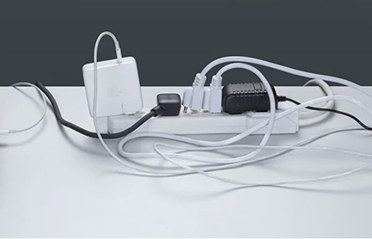In
our daily lives, power strip surge protectors are essential tools for
safeguarding your electronic devices from power surges. However, like any
electrical device, they can encounter issues that may hinder their performance.
Knowing how to troubleshoot common problems can help you maintain their
functionality and ensure the continued protection of your equipment. Here, we
will explore some of the most frequent issues with power strip surge protectors
and how to address them.

Common Issues and Solutions of Power Strip Surge Protectors
Understanding
the common problems associated with power strip surge protectors and their
solutions can help you quickly resolve issues and keep your devices safe. Here,
we will discuss several typical issues and provide practical troubleshooting
steps.
1. Power Strip Not Working
One
of the most common issues is a power strip that fails to power on or supply
electricity to connected devices. This can be due to several reasons. To solve
it, please ensure that the power strip is properly plugged into a working
outlet by testing the outlet with another device. If the outlet is functional,
try pressing the reset button on the power strip, as many models come with
built-in reset mechanisms. Additionally, inspect the power cord for any signs
of damage; if the cord is frayed or damaged, it may need to be replaced.
Sometimes, the power strip may have tripped due to an overload protection
feature. In this case, reduce the number of connected devices and reset the
power strip to restore functionality.
2. Devices Not Charging or Powering On
Another
common issue is when devices connected to the power strip do not charge or
power on. Start by testing each outlet on the power strip with a known working
device to identify if some outlets are faulty. If certain outlets do not work,
the power strip may be defective and require replacement. Verify that the
connected devices are compatible with the power strip's voltage and current
ratings. Additionally, inspect the cables and plugs of the connected devices
for any damage or loose connections, as these can prevent proper charging or
powering.
3. Frequent Tripping
If
the power strip frequently trips or shuts off, it could be due to an overload
or a short circuit. To troubleshoot this issue, begin by disconnecting some
devices to reduce the overall load on the power strip, as high-power devices
like heaters or air conditioners should not be plugged into standard power
strips. Inspect the power strip and connected devices for any signs of short
circuits, and replace any damaged devices or cords. If the power strip
continues to trip frequently despite reducing the load, it may be faulty and
need replacement to ensure safety and functionality.

4. No Surge Protection Indicator
Many
surge protectors have an indicator light that shows whether the surge
protection is active. If this light is off, it may indicate a problem. First,
check the user manual to understand the meaning of the indicator lights, as
some models have separate lights for power and surge protection. Plug a small,
low-power device into the power strip to see if it receives power. If the
device powers on but the surge protection light is off, the surge protection
may have failed. In such cases, it is advisable to replace the surge protector
to ensure continued protection for your devices.
5. Overheating
Overheating
can be a sign of an overloaded power strip or poor ventilation. To address this
issue, ensure that the power strip is placed in a well-ventilated area and
avoid covering it with objects or placing it in confined spaces. Reducing the
number of connected devices can also prevent overheating by lowering the
overall load. Additionally, inspect the power strip and connected devices for
any signs of damage or malfunction that could cause overheating, and replace
any faulty components as necessary.
Conclusion
Now
you know the common issues with power strip surge protectors and the solutions.
By understanding these problems and their solutions, you can maintain the
functionality of your power strip and ensure the continued protection of your
electronic devices. Regular maintenance and timely replacement of surge
protectors are crucial for safeguarding your valuable equipment. In addition,
investing in a high-quality power strip surge protector is also important to keep your devices safe and your
power strip functioning efficiently.
